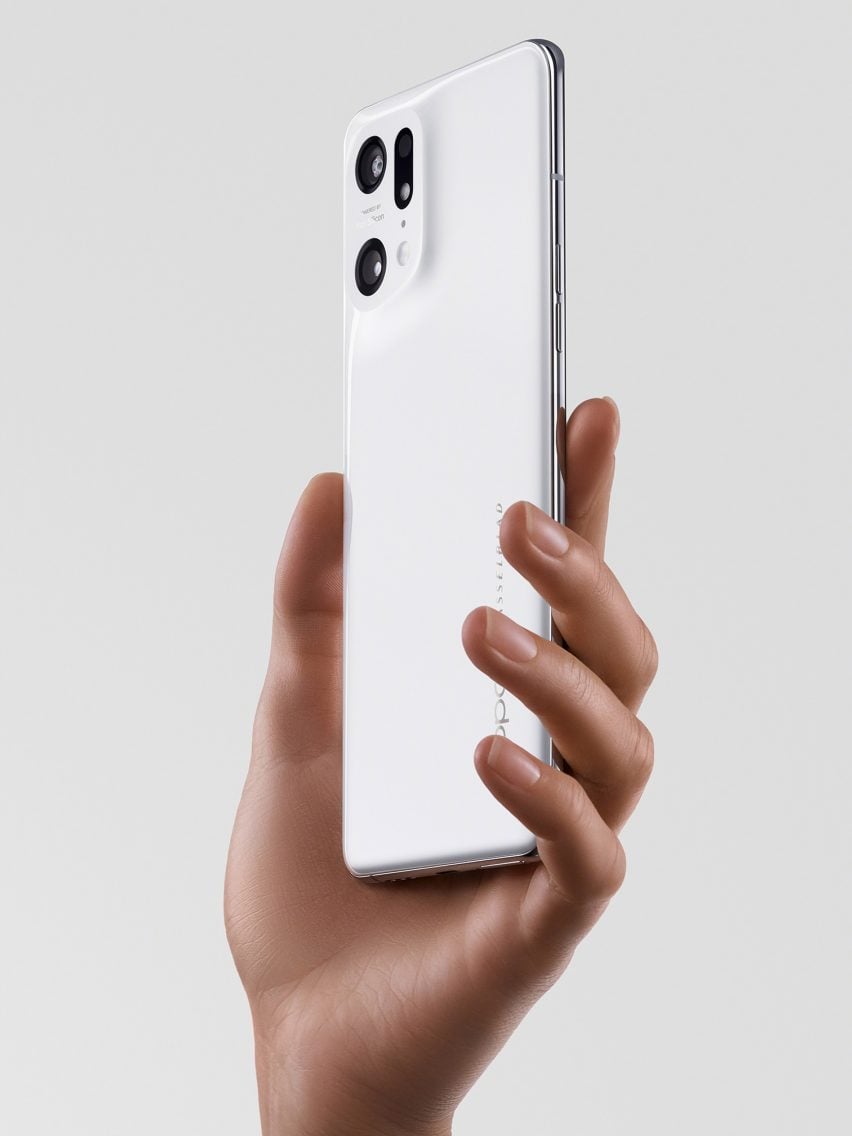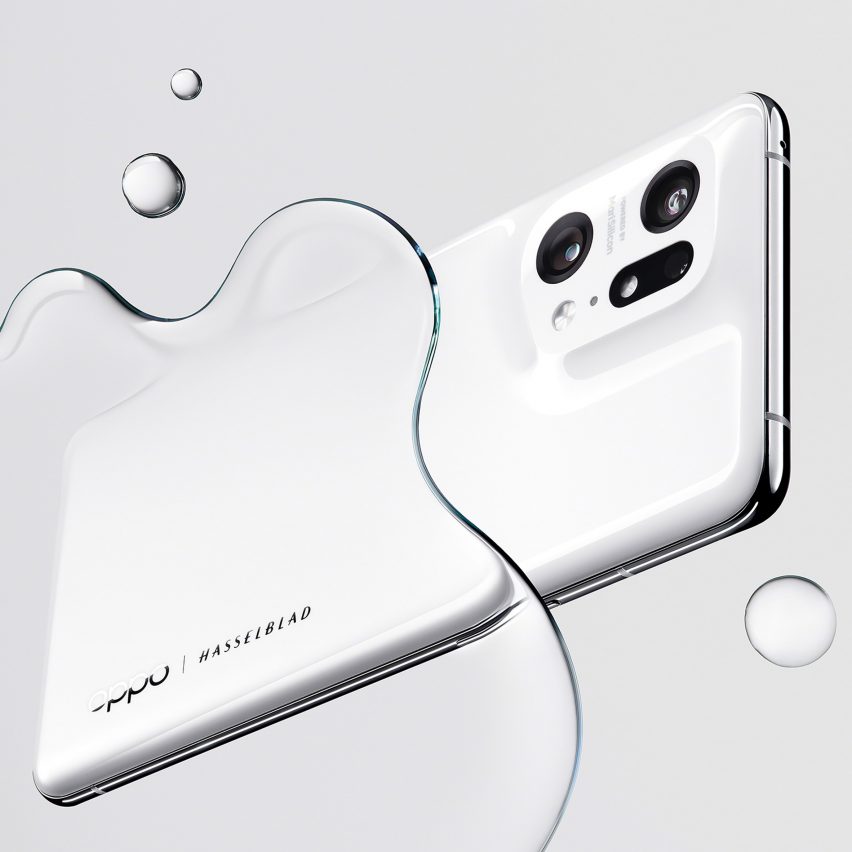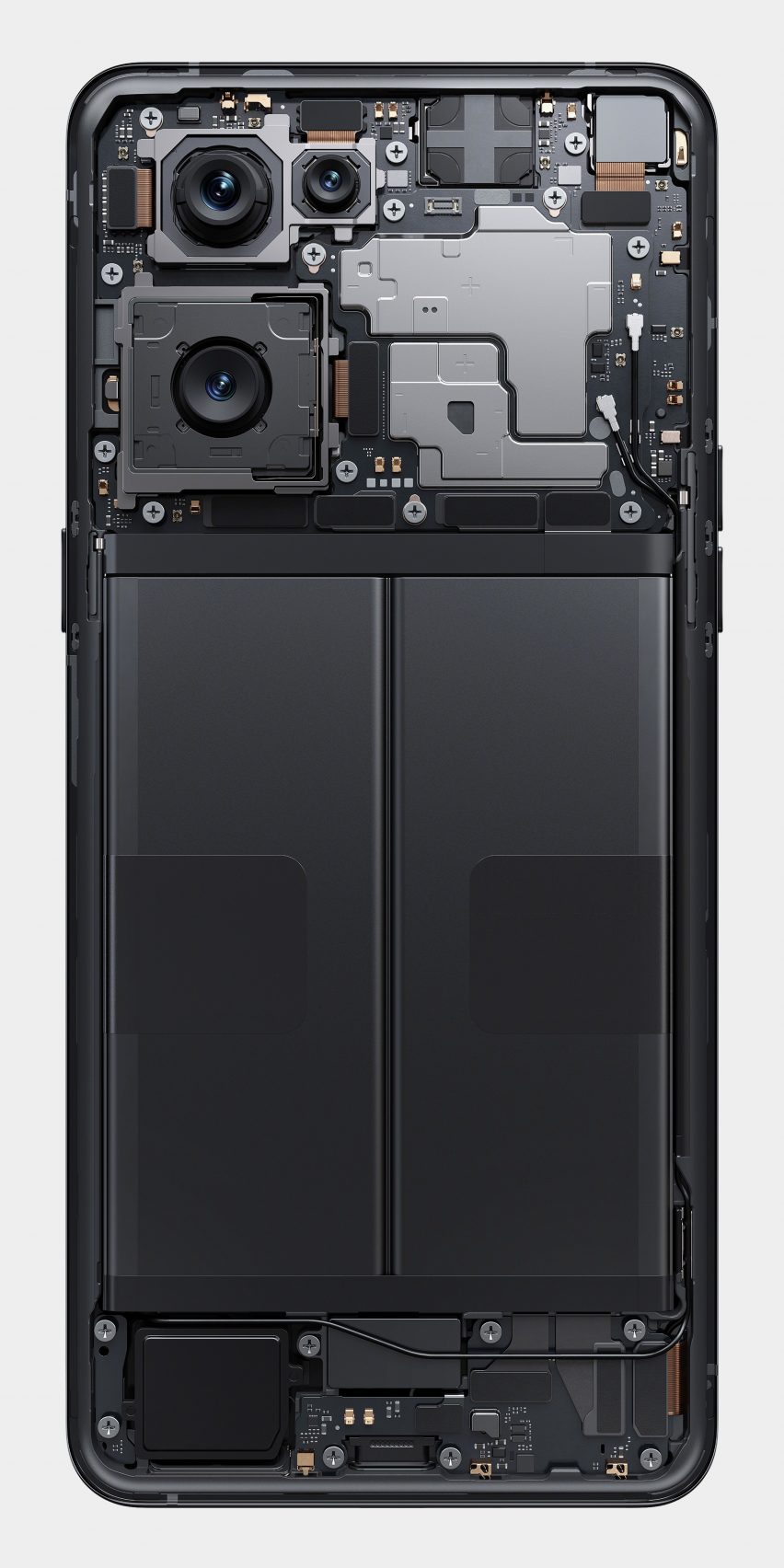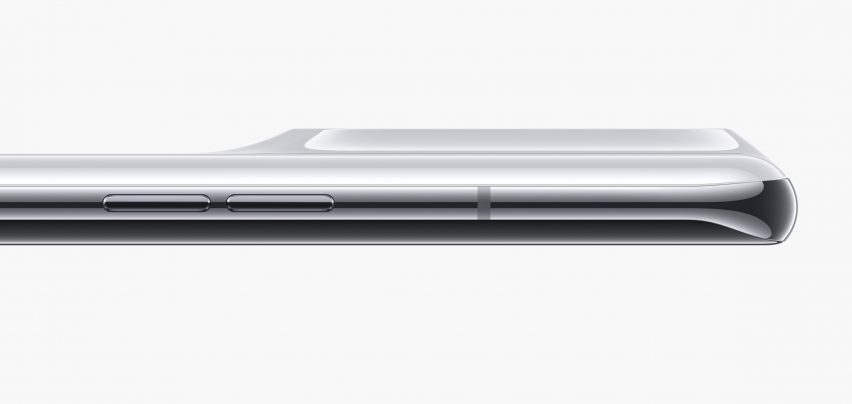OPPO uses ceramics in its latest smartphone to "allow warmth into a typically cold tech product"
Promotion: OPPO's latest Find X5 Pro smartphone features a ceramic case to create a warmer and more tactile device, according to OPPO industrial designer Yue Dong.
Find X5 Pro is distinguished by its curved shape, which is a recurring theme throughout OPPO's designs, and is intended to bring out a "calm, warm and comfortable feeling".

The design concept for the latest Find X Series phone was informed by the streamlined design of spacecraft, according to Dong.
"Smartphones have made our lives ever busier and stressful," Dong told Dezeen. "We created this phone hoping to allow some warmth into a typically 'cold' tech product."
Ceramic creates a "unified and streamlined body"
Smartphones are typically made from glass, metal or plastic but OPPO achieved the curved body of the Find X5 Pro using nanometer microcrystalline ceramic as the smartphone's primary material, which was chosen for its wear-resistant and structural properties and ability to create a "unified and streamlined body".
"Ceramic represents legacy and beauty and pushes the boundaries of smartphone design," said Dong.

The smartphone's ceramic back panel is intended to give a "warm and jade-like feel" and is two times stronger than a typical glass panel and two times as effective for heat dissipation, according to Dong.
The smartphone has a curved structure
The curved ceramic back is also designed to allow the camera to better integrate with the body of the phone.
According to Dong, smartphones usually have a raised ring on the camera's lens to protect it, but thanks to the use of ceramic, the Find X5 Pro's ring was removed to allow the camera to sit closer to the back panel.
"As the camera's performance increases, it tends to grow larger and protrude more from the design," said Dong. "This isn't user friendly."

The camera area is raised up to 3 millimetres from the back, which presented challenges while making the ceramic cover in order to ensure consistent density across the smartphone.
"Eventually, OPPO achieves the perfect placement of the camera lenses under the ceramic housing with 0.10 millimetre in precision," said Dong.

Find X5 Pro features a volcano-like camera area, which is made by CNC cold engraving technology, a ceramic manufacturing method to help create "smooth curves and reduce fingerprint marks".
The Find X5 Pro's ceramic cover took 168 hours to build
During the nanometer microcrystalline ceramic process, ceramic powder is used to cast the phone case. However, according to Dong the use of ceramics is difficult as the process requires over 1000-degree calcination and 168 hours to build.
"Although ceramic is the natural choice for a premium handset, the downside of ceramic is obvious – it is difficult to process," said Dong. "Such a special design demonstrates OPPO's extreme craftsmanship capabilities from end-to-end."
As ceramic is a heavier material than glass, in order to balance the weight and strength, the team conducted a drop test on every curved surface to determine the right thickness. Dong explained that his team tested the process dozens of times, each of which took a month.
Through OPPO's meticulous craftsmanship, Find X5 Pro is intended to showcase the brand's commitment to "harmonize trendy futuristic design with user experience".
Like its smartphone series, OPPO's amorphous headquarter in Shenzhen, designed by Zaha Hadid Architects is also curved, and is currently under construction and due to complete in 2025.
To view more about Find X5 Pro, visit OPPO's website.
Partnership content
This article was written by Dezeen for OPPO as part of a partnership. Find out more about Dezeen partnership content here.
Dezeen is on WeChat!
Click here to read the Chinese version of this article on Dezeen's official WeChat account, where we publish daily architecture and design news and projects in Simplified Chinese.